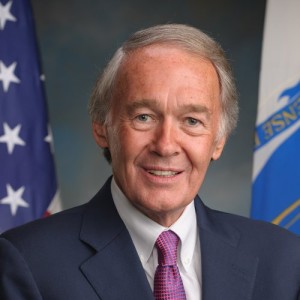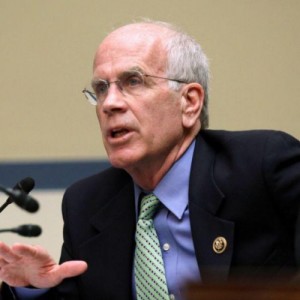Bicameral legislation was introduced last week to the U.S. houses of congress by Senator Edward J. Markey and Rep. Peter Welch to protect individual privacy from the growing number of government and commercial drones in use. The Drone Aircraft Privacy and Transparency Act (PDF) has been referred to the House Committees on Transportation and Infrastructure and Energy and Commerce.
The Federal Aviation Administration (FAA) has put together a drone advisory committee, which Recode reports FAA Office of Unmanned Aircraft Systems director Earl Lawrence referred to in response to Markey. The National Telecommunications and Information Administration (NTIA) published voluntary best practices guidelines in 2016 (PDF), which recommends some similar steps to notifying the public of data collection practices as those proposed in the Act.
The act requires applicants to the FAA for drone licenses to submit a data collection statement. The statement
must include who will operate the drone, where it will fly, what kind of data will be collected and how it will be used, whether it will be sold to third parties, and how long it will be retained for.
It requires law enforcement agencies to have a warrant or “extreme exigent circumstances” to use drone surveillance. It also requires law enforcement agencies, their contractors and subcontractors to include an additional statement on how they will minimize data collection and retention of data unrelated to investigation of a crime. The FAA would also be required to create a website to list approved licenses, and the related data collection and minimization statements, as well as times and locations of drone flights, and data security breaches suffered by licensees.
The searchable information provided by the website would be required under the Act to disclose each drone’s technical capabilities, including facial recognition capabilities.
Drones flying overhead could collect very sensitive and personally identifiable information about millions of Americans, but right now, we don’t have sufficient safeguards in place to protect our privacy,” said Senator Markey, a member of the Commerce, Science and Transportation Committee. “The Drone Aircraft Privacy and Transparency Act requires transparency in domestic drone use and adds privacy protections that ensure this technology cannot and will not be used to spy on Americans.”
Senator Markey introduced similar legislation in 2015, which made it to Senate committee hearings in 2016 before stalling.
A separate bill in the Kentucky state legislature, sponsored by Rep. Diane St. Onge and significantly limiting the use of drone surveillance without a warrant by police, passed the Senate Judiciary Committee last week by a 6-2 vote, Spectrum News reports. House Bill 291, which includes the Citizens’ Freedom from Unwarranted Surveillance Act, passed through the State House of Representatives in February. It sets out parameters for criminal offences relating to drone use, limitations to evidence collection using drones, and exceptions for educational drone use by school districts.
The FAA estimates that up to 2.7 million commercial unmanned aircraft will be sold each year in the U.S. by 2020.
Source: Biometric Update



Once again, our elected legislators are proving that they feel the need to justify their existence by “legislating” that which a) Doesn’t need to be legislated. b) Can’t be legislated. c) Is the wrong thing to be legislating. I encourage the Distinguished Gentlemen to call or email me and I will explain the folly of their endeavors and why the only outcome from their no doubt well-intentioned legislation will be to yet again stifle business/economic growth, entrepreneurial innovation, the US’s leadership role with this exciting new technology, and our economy. NO ONE flying “drones” for commercial purposes is doing so for the purpose of “spying” on the American Public or private citizens or for the purpose of “invading their privacy”. IT JUST DOESN’T HAPPEN. I don’t recall seeing any newly proposed legislation banning pilots or passengers in full-sized helicopters or general aviation aircraft from carrying cameras and taking pictures of people or structures on the ground. Yet, from 500 Ft AGL at 100 MPH with a full-frame DSLR camera and a 400MM or larger lens I can read the time on someones watch. However, with a consumer, pro-sumer, or moderate-heavy lift multi-rotor “drone” from 75-100 feet AGL standing still, I can get a wonderful still image of a house, building, rooftop, or a scenic view. They are NOT good for centimeter level quality images. And to get that up-close type of detailed imagery requires getting UP CLOSE. They are neither silent, nor invisible. They are noisy and attract attention. The people who are flying these things recklessly, intrusively, and dangerously ARE NOT the professionals trying to leverage the technology to provide a better life for themselves and their families. The REAL perpetrators of all that is bad about “drones” are the hobbyists and recreational fliers. If you want to pass MEANINGFUL commonsense legislation, regulate the hobbyists. Stop the recreational drone flying anywhere except over an individuals own personal property or at an AMA or other CBO approved radio-controlled aircraft flying field. (Just like it was done for DECADES.) We NEVER had these problems when RC hobbyists flew at designated fields, or, if they had the space, on their own property. If a commercial/professional “drone pilot” has passed their Part 107 exam and is licensed by the FAA, pass a law requiring them to carry $1M of liability insurance. Then, LEAVE THEM ALONE. The safety hazards to manned aircraft in the NAS and privacy intrusions on the ground are being caused by recreational/hobbyist use of this new technology. THOSE are the people you need to regulate. I’m easy to find…. call me. I’ll explain it to you.